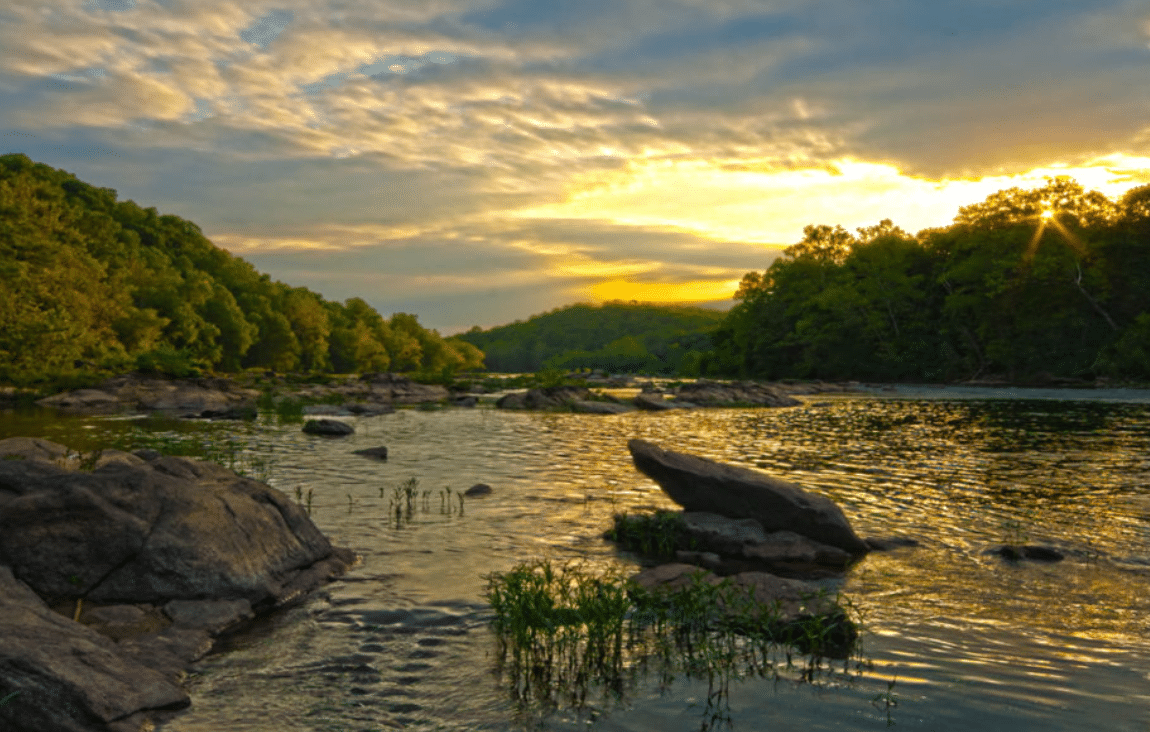
Rappahannock Tribal Constitution Recognizes the Rights of the Rappahannock River
Through a tribal-wide vote, the Rappahannock Tribe in Virginia has become the first Tribal Nation in the U.S. to adopt a Tribal Constitution that recognizes the constitutional rights of nature.
The new Rappahannock Constitution recognizes the legally enforceable rights of the Rappahannock River to “exist, flourish, regenerate, and evolve.”
The Constitution also recognizes that the River possesses the right to groundwater recharge, the right to provide healthy habitat to native fish and plant species, and the right to natural water flow. It also recognizes the authority of any tribal member to enforce the rights of the Rappahannock River in court.
While “rights of nature” laws recognizing the legally enforceable rights of ecosystems and species have been adopted by over three dozen municipalities and tribal governments in the U.S. – this is the first Tribal Constitution to protect the constitutional rights of a specific ecosystem. Constitutions are the highest form of written law within legal systems.
The new Constitution also establishes a tribal court system, and the tribal council will be adopting a new code that will provide for enforcement of the rights of the Rappahannock River in their tribal court system.
Anne Richardson, Rappahannock Tribal Chief, declared, “We are proud to be the first Tribe in the United States to recognize the constitutional rights of nature, through our recognition of the legal rights of the Rappahannock River. Legal rights for the River was a logical next step – to put the force of tribal law behind the River, focused on protecting our River as the Mother of our people.”
Melissa Ehrenreich, Executive Director of the Indigenous Conservation Council for the Chesapeake Bay, explained, “The ratification of the Rappahannock Tribal Constitution is a major milestone that demonstrates how sovereignty and self-determination can be harnessed to protect ecosystems and species upon which their traditional cultures depend. Tribal Nations across Virginia are now standing up Tribal Courts to speak up for tribal communities and Indigenous values. This is just the beginning of using these new tools to protect the rights of nature.”
The Center for Democratic and Environmental Rights (CDER) assisted the Rappahannock Tribe in developing the rights of nature constitutional provisions. Thomas Linzey, Senior Legal Counsel at CDER, stated, “It was our privilege to assist the Rappahannock Tribe with the drafting of rights of nature language for the Rappahannock Constitution. We applaud the Rappahannock Tribe in becoming the first Tribe in the United States to enshrine legal rights for ecosystems in their Constitution.”
*****
Rappahannock Tribe: The mission of the Tribe is to preserve Rappahannock culture, social structures, and political structures while educating the public on the rich contributions that Rappahannocks have made and continue to make to Virginia and the Nation.
Indigenous Conservation Council for the Chesapeake Bay (ICC): The ICC serves as an organized body through which tribal nations from across the region can share and create resources to return to and reconnect with their ancestral landscapes. The ICC is formed on the basis that returning land to Indigenous Peoples who can practice tribal values and strong relationships with the land is one of the best ways to restore and heal landscapes and communities.
Center for Democratic and Environmental Rights (CDER): CDER has partnered with Indigenous organizations and Tribal Nations to advance rights of nature laws and policies. The founders of CDER drafted the first rights of nature laws in the world, including consulting on Ecuador’s Constitution, the first in the world to enshrine the constitutional rights of nature. To learn more about the rights of nature, including laws, court rulings, a timeline, and enforcement efforts around the world, visit CDER’s website.